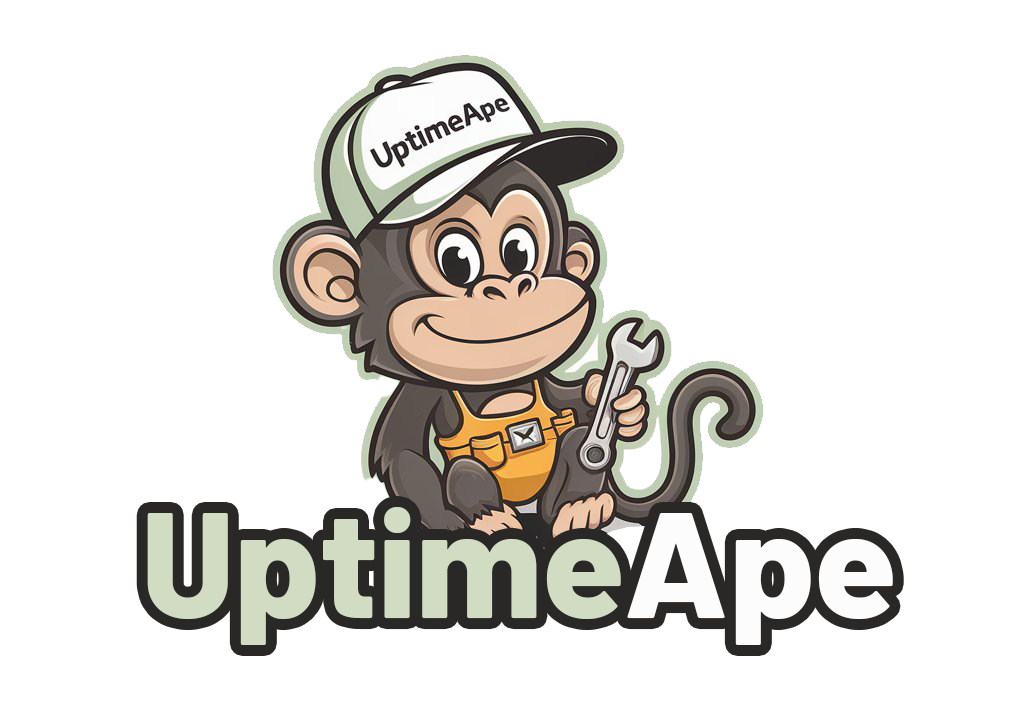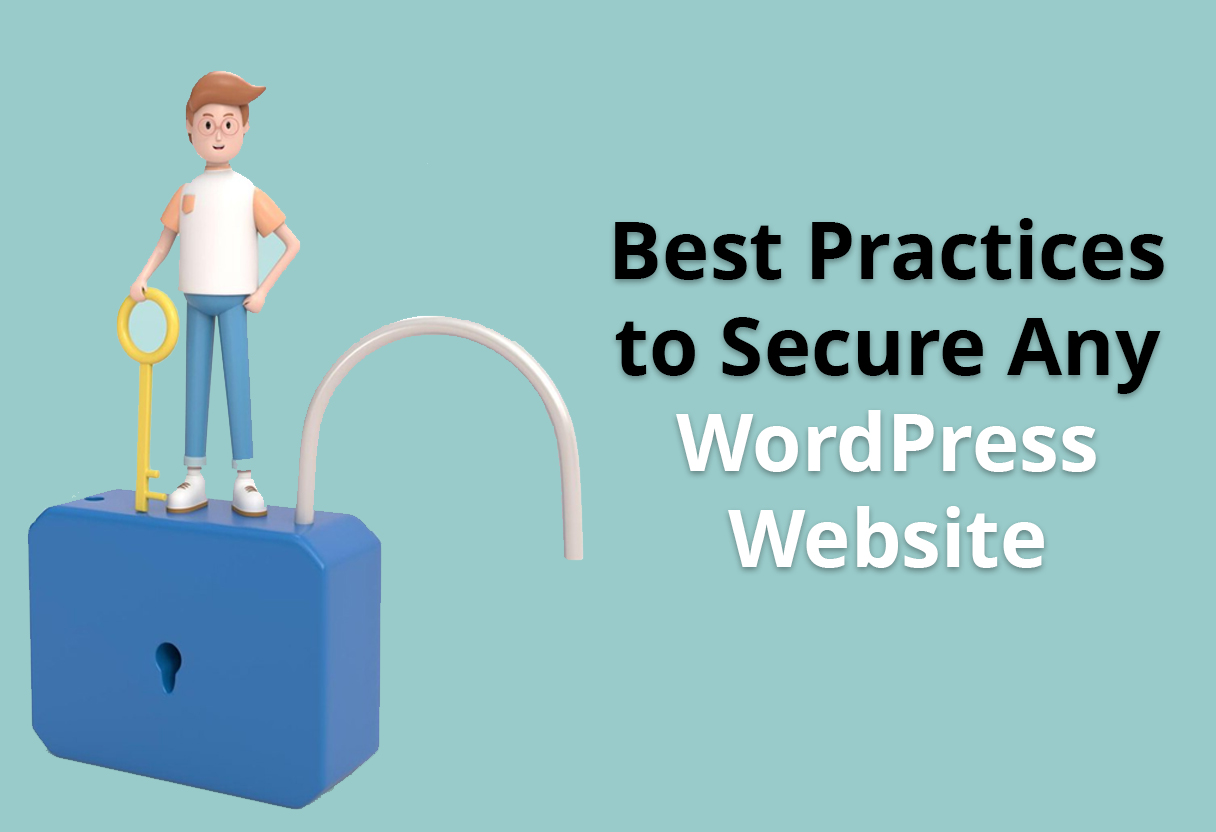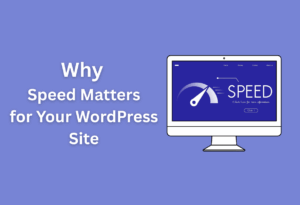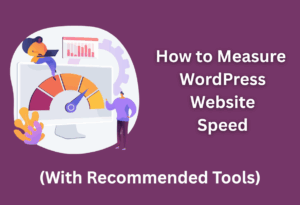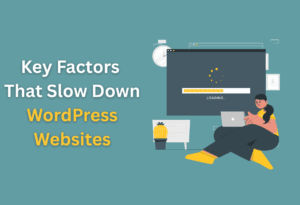With the rise in cyber threats, securing your WordPress website has never been more important. Whether you’re running a personal blog or a business site, implementing effective security measures is vital to protecting your valuable content and sensitive data.
In this article, you’ll discover the top 10 best practices that will help you fortify your WordPress site against attacks, ensuring a safer online experience for both you and your visitors. Additionally, we’ll delve into essential techniques for assessing WordPress website security, allowing you to identify potential vulnerabilities before they can be exploited. By implementing these best practices, you’ll not only enhance your site’s defenses but also build trust with your users. Stay tuned as we break down each practice to empower you with the knowledge to maintain a robust and secure WordPress environment.
Key Takeaways:
- Regularly update WordPress core, themes, and plugins to protect against vulnerabilities.
- Implement strong password policies and two-factor authentication to enhance account security.
- Use a reputable security plugin for ongoing monitoring and threat detection on your website.
Use Strong Passwords
For securing your WordPress website, implementing strong passwords is imperative. Weak passwords are the most common vulnerabilities exploited by hackers. Ensure that you create passwords that are difficult to guess, as these protective measures significantly lower the chances of unauthorized access to your site.
Mix Letters, Numbers
Strong passwords should incorporate a blend of uppercase and lowercase letters, numbers, and special characters. This complexity significantly enhances your password’s strength, making it far more resistant to brute-force attacks. Aim for at least 12-16 characters to further fortify your password.
Avoid Common Phrases
Strong passwords should steer clear of widely used phrases or predictable patterns such as “password” or “123456.” These are easily guessed by attackers using automated tools. Instead, create unique phrases that are not only memorable for you but are also difficult for others to decipher.
This means you should avoid commonly known phrases or sequences that can easily be associated with you, like your name, birthday, or pet’s name. Using personal information makes your password vulnerable to social engineering tactics.
Instead, opt for random combinations or use a password manager to generate and store complex passwords securely. By doing so, you enhance your security and protect your website against potential breaches.
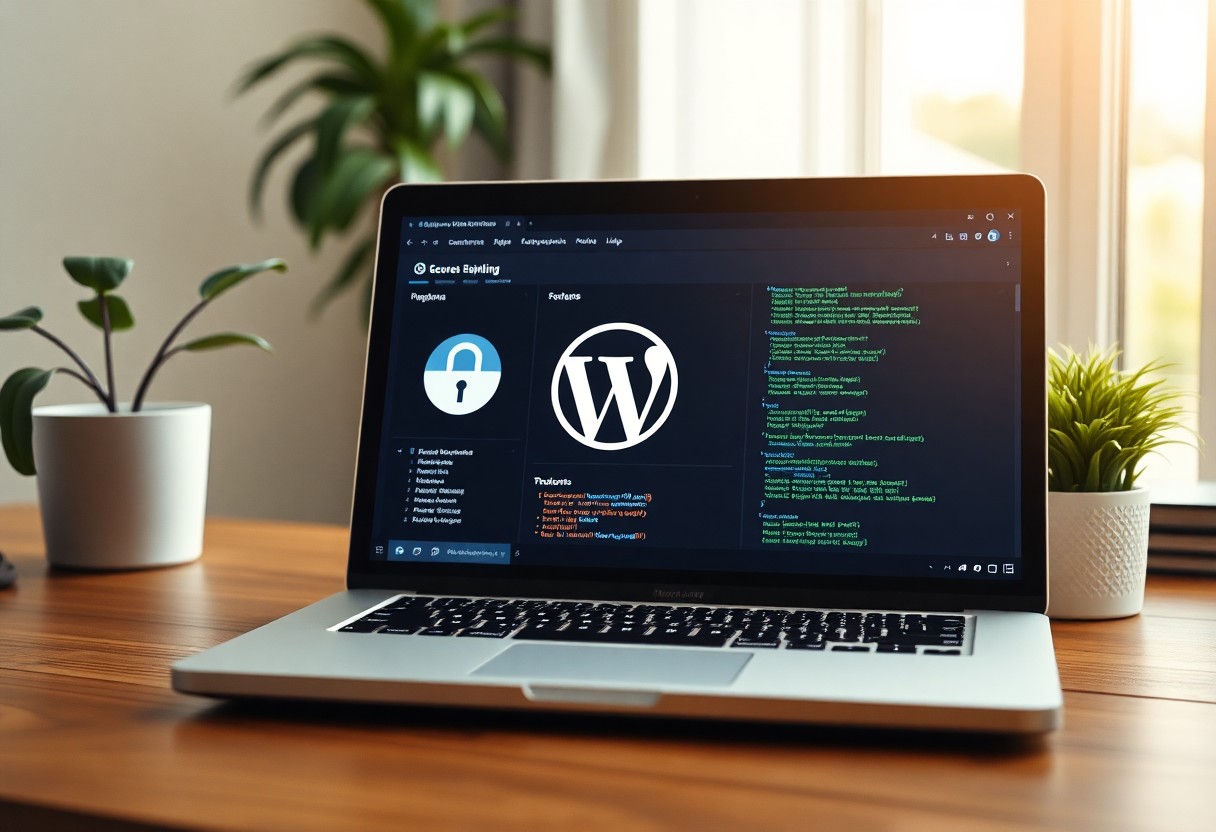
Update Regularly
The security of your WordPress website hinges significantly on regular updates. Keeping your site up-to-date minimizes vulnerabilities and enhances performance.
This practice encompasses updates for the WordPress core, plugins, and themes, all of which require your attention to ensure optimal security and functionality.
WordPress Core Updates
WordPress releases regular core updates that address security flaws, improve performance, and introduce new features. By promptly applying these updates, you safeguard your site from potential attacks and ensure that it runs smoothly. Always set your website to receive automatic updates when possible, reducing the risk of missing crucial patches.
Plugin and Theme Updates
You’ll find that plugins and themes are frequent targets for attackers, making their timely updates crucial. Failing to update these components can leave your site vulnerable to exploits that may compromise sensitive information or take your site offline.
For instance, outdated plugins can harbor security vulnerabilities that hackers easily exploit, leading to potential data breaches or site outages. Additionally, plugin conflicts can arise with new WordPress core updates if you’re not keeping everything current.
Therefore, make it a practice to regularly check for and apply updates to all plugins and themes. It’s crucial that you prioritize this routine, as staying current not only fortifies your site’s security but also enhances overall performance and user experience.
Implement Two-Factor Authentication
Despite the inherent security measures of WordPress, adding two-factor authentication significantly fortifies your defenses against unauthorized access. This additional layer of security requires users to verify their identity through a second method, drastically reducing the risk of breaches even if your password is compromised.
Extra verification layer
You can enhance your website’s security by implementing an extra verification layer that safeguards your account from potential threats. This method requires you to provide not just your password, but also a secondary form of identification, ensuring that only you can access your website.
Mobile apps or SMS
On top of adding layers of security, you can choose to receive verification codes through mobile apps or SMS. This flexibility allows you to select the method that suits your needs best, whether you prefer a dedicated authentication app or a simple text message to your phone.
TwoFactor authentication via mobile apps or SMS provides an effective way to secure your login process. Mobile apps, like Google Authenticator or Authy, generate time-sensitive codes that you can use for login, while SMS codes are sent directly to your phone for quick access.
While both methods increase your security, using authentication apps is often considered safer, as SMS can potentially be intercepted. Whichever option you choose, implementing this feature is a positive step towards securing your WordPress website.
Limit Login Attempts
After implementing security measures, one fundamental practice is to limit login attempts to your WordPress site. By restricting the number of login attempts, you significantly reduce the risk of unauthorized access, making it difficult for intruders to guess your password through repeated trial and error. This simple step can help enhance your site’s overall security, protecting your valuable data and digital assets.
Prevent Brute Force
Attempts to breach your website through brute force attacks involve repeatedly guessing passwords until the correct one is found. These attacks can overwhelm your login page and eventually grant unauthorized access to your site.
By limiting the number of attempts to log in, you can effectively block these malicious efforts, safeguarding your site against potential threats.
Set Thresholds
Now, when you decide to implement login attempt limits, it’s important to set appropriate thresholds for failed login attempts. For instance, you may want to allow no more than three unsuccessful login attempts before temporarily locking the user out.
This strategy helps you maintain accessibility while also adding a level of security to your site. It can be beneficial to notify users when they are locked out and provide a clear process for recovery, ensuring a smooth user experience.
Thresholds play a vital role in your site’s security strategy. Too lenient, and you risk making your site vulnerable; too strict, and you could frustrate legitimate users. Finding the right balance is key. By setting these limits effectively, you can mitigate risks from attacks while maintaining access for authorized users.
Implementing such a practice not only protects your website from unauthorized attempts but also promotes a safer online environment for you and your visitors.
Utilize Security Plugins
Many website owners overlook the importance of utilizing security plugins for their WordPress sites. These tools offer a range of features designed to enhance your site’s security, such as regular updates, malware scanning, and login protection.
By integrating a reputable security plugin, you can significantly reduce the risk of cyber threats and ensure that your website remains a safe space for users.
Scan for Vulnerabilities
There’s no denying that vulnerabilities can weaken your site’s defenses. Regularly scanning for security issues helps you identify potential threats before they can be exploited.
Most security plugins come with built-in scanning tools that automatically check for vulnerabilities and suggest immediate actions to rectify them, allowing you to maintain a secure environment effectively.
Enable Firewalls
One of the best defenses against cyber attacks is to enable a firewall. A firewall actively monitors and filters incoming and outgoing traffic, blocking unauthorized access attempts.
It acts as a barrier between your website and harmful entities, keeping your data safe from potential breaches. Implementing a firewall ensures that malicious traffic is thwarted before it reaches your site, thereby enhancing overall security.
Utilize a firewall as part of your website’s security strategy to shield against malware and hacking attempts. Many firewall solutions also come with customizable rules, allowing you to adapt the protection based on your site’s specific needs.
With a robust firewall in place, you can significantly reduce your website’s susceptibility to cyber attacks, ensuring that your users’ data remains protected and your site operates smoothly.
Secure Hosting Environment
Your choice of hosting environment is fundamental to the overall security of your WordPress website. Selecting a secure hosting provider not only protects your website from potential threats but also ensures that your data remains safe.
A reliable hosting company typically offers robust security features, consistent updates, and an overall commitment to maintaining a secure infrastructure, thereby giving you peace of mind.
Choose Reputable Hosts
Any hosting provider you consider should have a solid reputation for security and performance. Look for reviews, testimonials, and a history of exceptional service in the WordPress community. A well-regarded host will actively implement security measures and quickly address vulnerabilities, ensuring that your site is protected from emerging threats.
Ensure Server Security
For your website’s safety, it’s important to confirm that your host employs strong server security protocols.
With a secure server environment, your host should implement features like firewalls, regular security patches, and malware detection systems. These measures significantly reduce the risk of attacks like DDoS or unauthorized access attempts. Additionally, your host should ensure that server software is always up-to-date and follows best practices for user authentication and data encryption. By prioritizing server security, you can greatly enhance your WordPress website’s defense against potential cyber threats.
Disable Directory Listing
All WordPress websites should disable directory listing to prevent unauthorized users from viewing the contents of your directories. When directory listing is enabled, anyone can access your site’s folder structure, potentially exposing sensitive files.
By turning off this feature, you ensure that only specific files are accessible, reducing the risk of tampering and unauthorized access, thereby enhancing your site’s security.
Protect File Access
The best way to protect your file access is to restrict access permissions for sensitive folders. This limits visibility and modifies behavior for certain files, ensuring that only authorized personnel or processes can access them.
Always ensure that files such as wp-config.php and wp-content/uploads are not publicly accessible, securing your valuable data against potential threats.
Use .htaccess File
With the .htaccess file, you can impose additional security measures on your WordPress site. By placing security rules in this configuration file, you can restrict access to sensitive files, block unwanted traffic, and set up basic authentication for specific directories. This tactic can significantly enhance your website’s security posture.
This powerful file can be your first line of defense. By adding directives to your .htaccess file, you can disable directory browsing, restrict access to certain file types, and even protect sensitive areas like your wp-admin folder. Furthermore, you can prevent hotlinking and IP blocking to mitigate attacks. Adjusting your .htaccess settings is straightforward but plays a vital role in fortifying your site against potential vulnerabilities and unauthorized intrusions.
Regular Backups
Now, implementing regular backups for your WordPress website is vital for safeguarding your data against loss from potential security breaches or unforeseen technical issues.
By scheduling backups, you ensure that you have a recent version of your site stored, allowing for swift recovery when needed. Making backups a routine part of your website management will give you peace of mind, knowing your content is secure.
Automated Backup Solutions
There’s a wide range of automated backup solutions available for WordPress that can streamline the process for you. These plugins or services can be set up to run at intervals, so you don’t have to worry about remembering to initiate backups. Choose a reliable plugin that meets your needs, ensuring that your data is regularly backed up without manual intervention.
Store Off-Site
Offsite storage solutions can significantly enhance your data security. By keeping your backups in a different location from your website, you protect your files from localized disasters such as server crashes or malware infections.
Backup files should be stored in a location that is separate from your WordPress hosting environment, such as a cloud storage service or an external hard drive. This will ensure that even if your website is compromised, your stored data remains safe and accessible for recovery. Always prioritize offsite backups to fortify your website’s defense against loss, as relying solely on your primary server can be risky when unforeseen issues arise.
Set Proper Permissions
Not setting proper permissions can leave your WordPress website vulnerable to attacks. It is important to define who has access to specific files and directories, ensuring that only authorized users can make critical changes. This reduces the risk of unauthorized access and potential breaches, protecting your website from malicious entities.
Restrict file access
Even small files can pose a security risk if improperly accessed. By restricting file access, you can prevent unauthorized users from viewing or altering important components of your website. Use a secure file permissions structure, limiting access to critical files, and ensure your configuration files are well protected.
User role management
You must carefully manage user roles on your WordPress site to ensure that only the right individuals have access to sensitive information and functionalities. By assigning specific roles with tailored permissions, you limit what users can do and access, thereby minimizing the risk of unintended changes or security breaches.
Implementing role management means you can delegate responsibilities without compromising your site’s security. You can establish roles such as Administrator, Editor, Author, and Subscriber, making sure that only those who require specific capabilities get them. This way, you balance functionality and security effectively.
Monitor Site Activity
Unlike other platforms, WordPress allows for significant customization, which also opens up various security vulnerabilities. You must stay vigilant by actively monitoring your site activity.
Regular checks can help you identify any suspicious behavior or unauthorized access, allowing you to take immediate action to protect your valuable content and user data.
Track Login Attempts
Site security heavily relies on monitoring login attempts. By keeping an eye on failed and successful logins, you can detect potential brute-force attacks early. Consider using security plugins that log these activities, enabling you to block suspicious IP addresses and enhance the safety of your website.
Audit User Actions
The integrity of your WordPress site depends on how well you audit user actions. Regular audits can help you identify who is accessing your site and what changes they are making. Implementing a robust auditing system helps keep track of user roles and permissions, ensuring that only authorized personnel can make vital modifications.
Activity logging provides vital insights into your site’s usage patterns. By monitoring actions like content edits, plugin installations, or security changes, you can spot unusual behavior that may indicate a potential security threat. With this information, you can quickly take corrective action before any significant damage occurs. Furthermore, maintaining detailed logs can also assist you in compliance with business policies and regulations, safeguarding both your reputation and user trust.
Summing up
Conclusively, by implementing these 10 best practices, you can significantly enhance the security of your WordPress website. Regularly updating your core files, using strong passwords, and enabling two-factor authentication are just a few steps that empower you to protect your online presence from potential threats.
Additionally, consider utilizing reliable security plugins, securing your hosting environment, and regularly backing up your site. Taking these precautions not only safeguards your data but also builds trust with your visitors, ensuring that your website remains a safe space for everyone.
